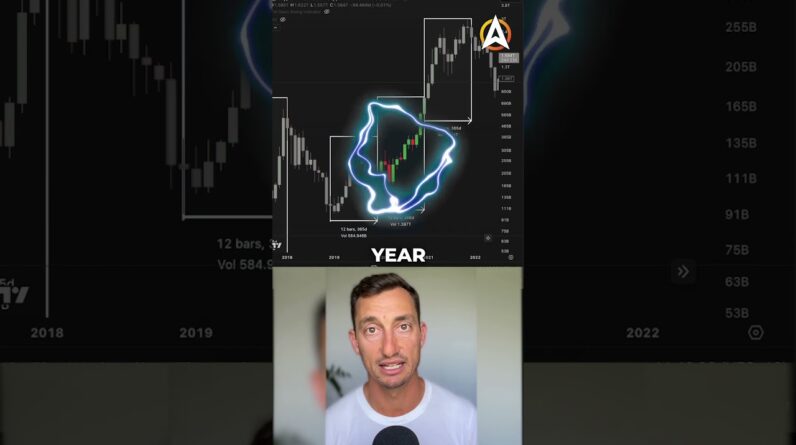
Are you eager to maximize your gains in the thrilling world of crypto leverage trading? Look no further! In this blog post, we will reveal a proven success strategy that will empower you to make the most out of each trade. Dive in and discover how you can effectively leverage your assets to purchase larger positions, mitigate risks, and ultimately enjoy greater profits. Don’t let this opportunity pass you by – leverage your potential for success today!
Crypto Leverage Trading Success Strategy
Introduction
Are you a crypto enthusiast looking to take your trading game to the next level? If so, then leverage trading might be the strategy for you. Leverage trading allows traders to multiply their potential gains by borrowing funds to increase their buying power. However, it’s important to approach leverage trading with caution, as it can also amplify losses. In this article, we will explore the keys to a successful leverage trading strategy in the crypto market.
Understanding Leverage Trading
Leverage trading involves using borrowed funds to amplify your trading position. It allows traders to take advantage of small price movements and potentially generate higher returns. However, it’s crucial to understand the risks involved. The higher the leverage, the greater the potential gains, but also the greater the potential losses. Proper risk management is essential to protect your capital.
Creating a Solid Plan
Before diving into leverage trading, you need to establish a solid plan. Here are some key steps to consider:
- Educate Yourself: Knowledge is power in the crypto market. Take the time to understand leverage trading, different trading strategies, and risk management techniques. Stay updated with market trends and news related to cryptocurrencies.
- Define Your Goals: What are you aiming to achieve through leverage trading? Define your financial goals, whether it’s generating short-term profits or growing your long-term investment.
- Set Risk Tolerance: Determine your risk tolerance level and evaluate how much you are willing to lose on each trade. It’s crucial to stick to your risk management plan and not let emotions dictate your decision-making.
- Choose the Right Platform: Research and select a reliable trading platform that offers leverage trading options. Look for platforms with a user-friendly interface, strong security measures, and competitive fees.
- Practice with Demo Accounts: Most trading platforms provide demo accounts where you can practice trading without risking real money. Utilize these accounts to familiarize yourself with the platform and test different strategies.
- Develop a Trading Strategy: Create a trading strategy that suits your goals and risk tolerance. Consider factors such as technical analysis, market indicators, and entry/exit points. Stay disciplined and avoid impulsive trades.
Leveraging Technical Analysis
Technical analysis plays a crucial role in successful leverage trading. Here are some key technical analysis tools and indicators to consider:
- Candlestick Charts: Learn how to read candlestick charts to analyze price patterns and identify potential trend reversals.
- Moving Averages: Moving averages help smoothen the price data and give a clearer indication of the overall trend.
- Relative Strength Index (RSI): RSI measures the speed and change of price movements. It helps determine overbought and oversold conditions.
- Bollinger Bands: Bollinger Bands indicate volatility levels and potential trend reversals. They consist of a moving average and standard deviation bands.
- Fibonacci Retracement: Fibonacci retracement levels help identify potential areas of support and resistance.
Effective Risk Management
Managing your risk is crucial in leverage trading. Here are some risk management techniques to consider:
- Set Stop-Loss Orders: A stop-loss order automatically closes your position when the price reaches a certain level. It helps limit potential losses.
- Use Take-Profit Orders: Take-profit orders allow you to lock in profits when the price reaches a predetermined level. It helps ensure you don’t miss out on potential gains.
- Avoid Over-Leveraging: Be cautious when selecting leverage ratios. Higher leverage may yield higher returns, but it also increases the risk of significant losses. Find a balance that suits your risk tolerance.
- Diversify Your Investments: Don’t put all your eggs in one basket. Diversify your trading portfolio across different cryptocurrencies to mitigate risks.
- Stay Informed: Keep yourself updated with market news, regulatory changes, and project updates. This will help you make more informed trading decisions.
Conclusion
Leverage trading can be a powerful tool for crypto traders, but it comes with significant risks. To succeed in leverage trading, it’s important to have a solid plan, understand technical analysis, and practice effective risk management. By educating yourself, developing a trading strategy, and staying disciplined, you can increase your chances of success in the highly volatile crypto market.
FAQs (Frequently Asked Questions)
- What is leverage trading in crypto?
Leverage trading involves borrowing funds to amplify your trading position in the crypto market, allowing for higher potential gains and losses. - What risks are associated with leverage trading?
Leverage trading amplifies both potential gains and losses. If the market moves against your position, you could lose more than your initial investment. - How can I manage the risks of leverage trading?
Managing risks in leverage trading involves setting stop-loss orders, using take-profit orders, avoiding over-leveraging, diversifying investments, and staying informed. - Can I practice leverage trading without risking real money?
Yes, many trading platforms offer demo accounts where you can practice leverage trading without using real money. - What is the best strategy for leverage trading?
The best strategy for leverage trading depends on your goals, risk tolerance, and market conditions. It’s essential to have a well-defined trading plan and stay disciplined in executing your strategy.
Note: The content provided does not constitute financial advice. Always do your own research and consult with a professional before making any investment decisions.






